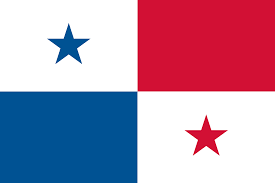 The Panamanian economy is vibrant and growing steadily with real GDP growth in high-single digits. In fact, with economic measures having been implemented after the overthrow of Manuel Noriega while reaching high gear with former president Martín Torrijos in the form of hefty deficit government spending and the promotion of key industries including commerce and services such as private banking, the country has an economy that is booming presently while attracting skilled migrants from nearby countries like Venezuela. Altogether, the economy of Panama stands right now at around $ 50 billion of total nominal GDP. Out of this total, 20% of the pie comes from revenues derived from the Panama Canal and the Colón Free-Trade Zone. Another 40% of the pie comes from private banking while another 20% comes from manufacturing goods such as aircraft spare parts, textiles and adhesives. The remaining 20% of the pie comes from business activities such as exports of agricultural commodities including shrimp and tourism. Likewise, foreign direct investments are vigorous specially in the real estate arena after having entrepreneurs like Donald Trump from the US developing massive projects in Panama City including the past construction of the tallest skyscraper in Panama and second regionwide. Last year, for instance, the country attracted inflows of $ 4.98 billion worth of FDI according to Statista. Overall, the total stock of FDI in Panama stands at $ 43.93 billion today. In addition, another heavy hitter in prime real estate investing in Panama worth mentioning is Colombian billionaire Jaime Gilinski Bacal who is building a gigantic master-planned development with British partners, converting an old air base on the outskirts of Panama City, into a self-sufficient community with office, hotel, retail, industrial, residential and leisure space on its grounds. When finished, the project as a whole known as “Panamá Pacífico” is expected to be worth around $ 10 billion while giving employment to approximately 40,000 Panamanian nationals.
The Panamanian economy is vibrant and growing steadily with real GDP growth in high-single digits. In fact, with economic measures having been implemented after the overthrow of Manuel Noriega while reaching high gear with former president Martín Torrijos in the form of hefty deficit government spending and the promotion of key industries including commerce and services such as private banking, the country has an economy that is booming presently while attracting skilled migrants from nearby countries like Venezuela. Altogether, the economy of Panama stands right now at around $ 50 billion of total nominal GDP. Out of this total, 20% of the pie comes from revenues derived from the Panama Canal and the Colón Free-Trade Zone. Another 40% of the pie comes from private banking while another 20% comes from manufacturing goods such as aircraft spare parts, textiles and adhesives. The remaining 20% of the pie comes from business activities such as exports of agricultural commodities including shrimp and tourism. Likewise, foreign direct investments are vigorous specially in the real estate arena after having entrepreneurs like Donald Trump from the US developing massive projects in Panama City including the past construction of the tallest skyscraper in Panama and second regionwide. Last year, for instance, the country attracted inflows of $ 4.98 billion worth of FDI according to Statista. Overall, the total stock of FDI in Panama stands at $ 43.93 billion today. In addition, another heavy hitter in prime real estate investing in Panama worth mentioning is Colombian billionaire Jaime Gilinski Bacal who is building a gigantic master-planned development with British partners, converting an old air base on the outskirts of Panama City, into a self-sufficient community with office, hotel, retail, industrial, residential and leisure space on its grounds. When finished, the project as a whole known as “Panamá Pacífico” is expected to be worth around $ 10 billion while giving employment to approximately 40,000 Panamanian nationals.
Moreover, the Colón Free-Trade Zone is the second largest port of its kind in Latin America and among the busiest worldwide importing and re-exporting finished goods amounting to an output of $ 8 billion worth of trade annually while containing a network of giant warehouses, trade show rooms, crane machinery and forklifts to move both containers and finished goods accordingly. Located in the city of Colón facing the Atlantic Ocean rather than the Pacific, this free port area complements revenues derived from tolls in the Panama Canal which stand at more than $ 2 billion a year today. Nevertheless, these revenues are expected to increase exponentially once the widening of the canal, a project currently being undertaken by an elite consortium of engineering firms led by the renowned Spanish civil engineering contractor known as Sarcyr S.A. at a cost of more than $ 5 billion, is finished towards the end of this year while letting vessels such as aircraft carriers, very large crude carriers, very large ore carriers, very large dry bulk cargo vessels, very large container ships and cruise ships safely cross the canal in near future.
Furthermore, having relinquished its monetary policy to the Federal Reserve after officially dollarizing the country’s currency, Panama has a dynamic financial sector stemming from being a prominent tax haven safeguarding and growing wealth belonging to high-net-worth individuals from Latin America primarily. In fact, the country has banking assets hovering $ 100 billion nowadays, or roughly twice the size of its total nominal GDP, which is a feature that implies a huge net foreign portfolio investment inflow not common at all in Latin America and partly explained by the official dollarization of the flourishing Panamanian economy itself. On the other hand, massive real estate investing and a rapidly growing tourism industry including seniors from all corners of the continent retiring in Panama, the country is moving forward on the right track.
To conclude, having an investment grade sovereign credit rating by all three credit rating agencies with the public debt currently standing at $ 19 billion or 38% of GDP, an external debt reaching just 29% of GDP today and one of the highest per capita GDPs in Latin America expected to reach $ 15,000 in nominal terms this year and $ 28,000 when adjusted for purchasing power parity or PPP, I think Panama is on solid footing in terms of trying to leave underdevelopment. Nevertheless, inequality continues to be high with a GINI coefficient for income distribution of 0.51 in 2014 and a poverty rate of 29% in 2014 as well. In fact, this is a feature that is typical of Latin America and I’m sure the current President of the Republic Juan Carlos Varela is addressing the issue appropriately enabling Panama to become a first world country in the not distant future.
